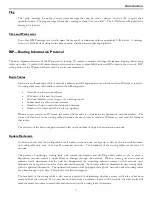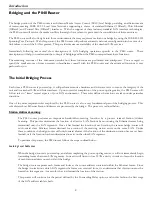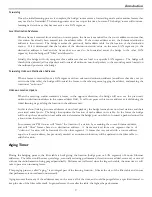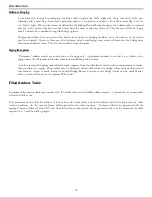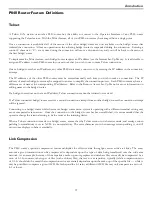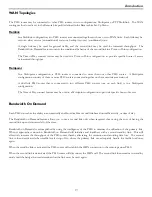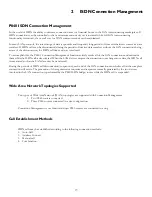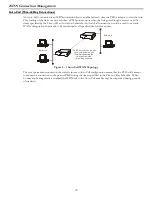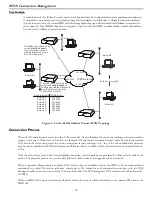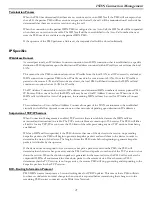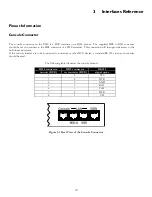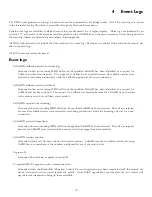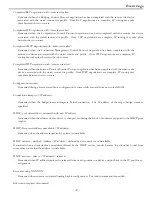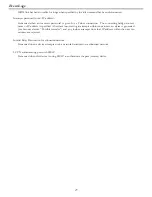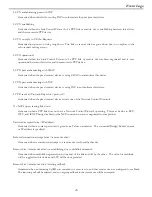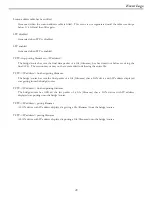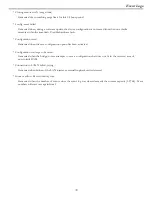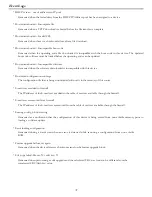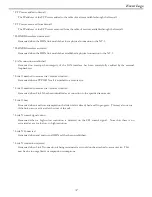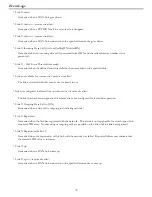
ISDN Connection Management
21
Termination Process
When the P840 has determined that there are no sessions active on an ISDN call, the P840 will attempt to close
the call. If the partner P840 still has sessions assigned to that call, the call will be maintained until each side has
determined that there are no active sessions using the call.
When the connection to the partner ISDN P840 is configured to use Auto-Call, the ISDN call will be suspended
when there are no session in the table. The ISDN call will be re-established to the Auto-Call number the next
time the P840 needs to send data to the partner ISDN P840.
If the operator of the P840 performs a link reset, the suspended call will be closed unilaterally.
IP Specifics
IP Address Connect
As stated previously, an IP Address Connect connection is an ISDN connection that is established to a specific
destination P840 dependent upon the destination IP address contained within IP traffic received from the local
LAN.
This means that the P840 continuously monitors IP traffic from the local LAN, as all IP routers do, and makes
ISDN connections to partner P840s when IP traffic needs to be sent to remote LANs. Once the IP traffic is
passed to the remote LAN and all sessions are closed, the local P840 will then disconnect the ISDN call and
continue to monitor the local LAN for IP traffic.
The IP Address Connect table consists of IP addresses and associated ISDN numbers of remote partner P840
IP Routers. Either one or both of the ISDN calls may be used for IP Address Connect use. When one of the
ISDN calls is defined for Auto-Call purposes, the remaining ISDN call may be used for IP Address Connect
use.
The combination of Auto-Call and Address Connect allows part of the WAN environment to be established
statically and still allow dynamic connections to other networks depending upon destination IP addresses.
Suspension of TCP/IP Sessions
When Connection Management is enabled, TCP sessions that are established across the ISDN calls are
monitored and maintained in a table. The TCP session table may contain up to 256 entries. The P840 will filter
all traffic for any TCP/IP session over the 256 limit of the table preventing any new TCP sessions from being
established.
While an ISDN call is suspended, if the P840 observes that one of the devices in the session stops sending
keepalive packets, the P840 will begin to generate keepalive packets and send them to the device in order to
determine the status of the device. The length of time the P840 waits before beginning to generate keepalive
packets is definable by the operator.
If the device does not respond to five consecutive keepalive packets sent from the P840, the P840 will
determine that the device has gone away and the P840 will send a packet to each end of the TCP session to shut
down the session. When the shut down packet is generated for the remote device, the P840 will re-activate the
suspended ISDN call and transmit the shut down packet to the remote device. Once the remote P840
determines that the TCP session is no longer active, the remote P840 will stop generating and responding to the
keepalive packets for that TCP session.
RIP—Routing Information Protocol
P840 ISDN routers incorporate a 3 second settling time for IP RIP updates. This means that a P840 will wait
for three seconds after an initial change in the network is reported before transmitting that change on to the
remaining P840 routers connected on the Wide Area Network.

